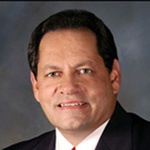There’s Nowhere Cooler Than Here
A former federal IT executive reflects on whether government service can be ‘cool.’
With the day-to-day challenges feds face in government IT, it is easy to overlook an important fact: They have one of the best jobs in the world. Not necessarily the easiest or the best paid. Rather, one of the most satisfying and consequential. They have an opportunity to work with a variety of technologies to address issues of critical importance. This was the point that CompTIA CEO Todd Thibodeaux recently made and it is something I observed first-hand over a nearly 40-year career with the federal government.
Having started in government at the age of 18, I was fortunate to have worked with thousands of talented and dedicated civil servants. Over time, many of them became the technology leaders of various agencies. We came to the federal government as a call to duty to serve our nation and make a difference.
Having worked across the 1970s, 80s and 90s, I can attest that these earlier mainframes, PCs, distributed computing and 3GL programming languages were just as challenging as today’s data analytics, cloud computing, open source software and mobile devices. And while many note that the private sector is often an earlier adopter, these technologies -- then and now -- were not perfected until they overcame the unique challenges of government. The hurdles include scale, performance, security, complexity and an uncompromising need for reliability.
So, to answer the question posed by Nextgov Wired Workplace blogger Brittany Ballenstedt, “Is government cool?” my answer is “Hell yes.”
Where else can an IT professional design and develop so many innovative and mission-critical systems? I can readily cite hundreds of really cool things that government builds and creates every year to protect, support and enhance the lives of not only U.S. citizens, but also people around the world. Where else can you develop mobile solutions to help our returning wounded warriors or create systems to monitor the performance of new drugs that might address common colds, depression, diabetes and even cancer? How about helping farmers grow more crops, protecting the mail against anthrax threats, managing cross-country flights, using facial recognition to identify criminals, analyzing genomes or just simply allowing Amtrak conductors to electronically scan tickets?
Here’s something that is often overlooked: With every new administration, some of the most experienced IT professionals from the private sector vie to come to work for the government as CIOs and other senior IT leaders. What draws them to public service? The size of the challenge? The level of urgency? The potential impact? Yes, yes and yes. There is no other environment where they can prove themselves as true change agents.
So why do young people view government as such an uncool place to work? There are numerous reasons. Weak CIO authority, elongated budget cycles, procurement policies that create the wrong incentives and too often a focus on checking boxes versus producing results. Ultimately, these factors create a risk-averse culture that lacks the moxie to take on big challenges.
This needs to change. The best and brightest are drawn to public service to serve. And if they are to create great things, we need to recognize that they will fail on occasion.
This perspective is embraced in Silicon Valley and Wall Street. With prudent risk management techniques, it can be embraced in government as well. Echoing the fail fast, fail cheap ethic, more iterative approaches can test and refine new ideas. By limiting initial investments but pursuing more opportunities, we will produce better results over the long-term.
The challenges facing the federal government are unique and significant. Rather than status quo approaches, new ideas are needed. We need to bring the best and brightest to government and we need to develop our existing talent as well. We also need to eliminate the barriers to innovation, providing them with the tools, techniques and technologies needed to take on big challenges and succeed.
If we do this right -- and I am confident we can -- employees will experience that exciting feeling I had across my long career -- it’s “cool” to have a career in the federal government.
Bob Otto is Executive Vice President for Advisory Services at Agilex Technologies, Inc. He culminated his nearly forty-year career in the public sector as CIO and CTO for the United States Postal Service. Otto blogs regularly at Realize the Value (& Advance the Mission).



